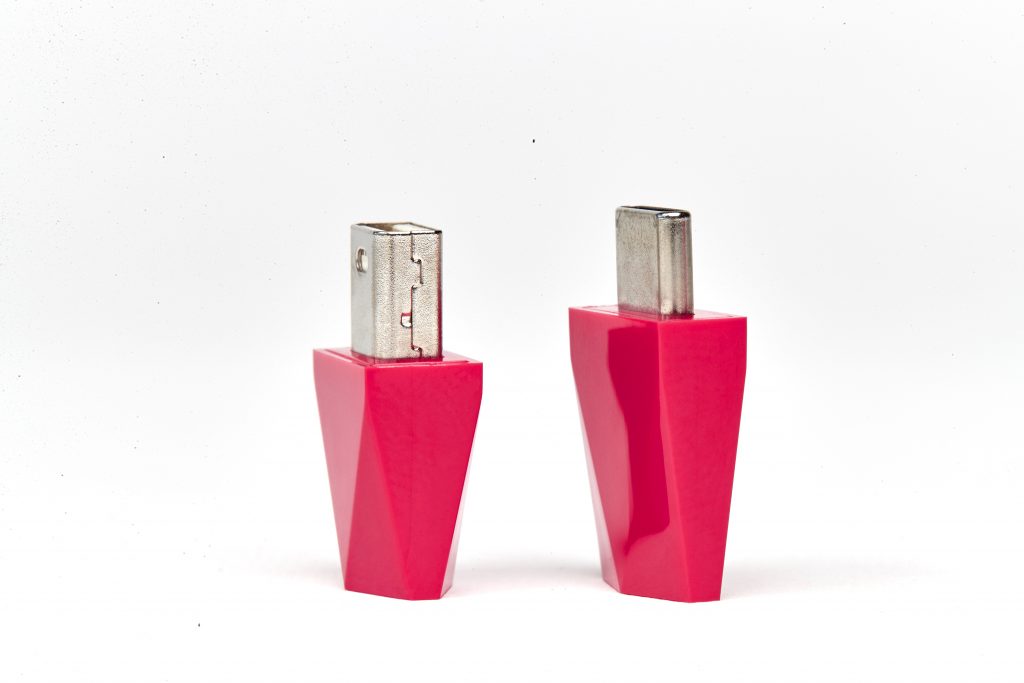
The short answer:
Luna can’t be used with adapters because of complex technical issues.
The long answer:
Ever since the start of the Luna Display Kickstarter, we have received a stream of questions regarding adapter or dock usage with Luna. After announcing the second production batch and delivering approximately 5,000 Lunas, we have received even more questions.
Our standard response can be summed up as “No adapters, technical issues.” This response is pretty vague, and it’s very clear to us at Astro that the Kickstarter community wants a better explanation. So here it is, but it does require a history lesson.
The history of DisplayPort
The core technology utilized in the Luna Display dongle is called the DisplayPort protocol. This protocol is a communication specification that has been adopted widely across the consumer electronics industry. The authors of this protocol and other protocols like it are the reason you can plug almost any monitor into any computer without extra software required.
The standard DisplayPort connector is a physically-massive, 20-pin connector that you may have seen on business class laptops or monitors. Shortly after DisplayPort was introduced to the market (around 2008), Apple announced its now very familiar Mini DisplayPort connector. The connector was designed, among other reasons, to allow Apple to create slimmer laptops while still utilizing the new DisplayPort protocol. The Mini DisplayPort connector squeezes all 20 pins into a much smaller connector. Working with other industry leaders, Apple was able to quickly integrate the Mini DisplayPort connector back into the core DisplayPort specification, and the new connector spread across the industry for the next few years.
Evolving into Thunderbolt
In 2011, Intel (in collaboration with Apple) introduced a new technology called Light Peak, which would later be rebranded as Thunderbolt. Thunderbolt is a hardware standard, designed to combine the DisplayPort specification with high bandwidth, mass data transportation (docking stations, hard drives, etc). In order to connect Macs to these new high-speed devices, Intel and Apple ended up relying on the already existing Mini DisplayPort connector as the connector for Thunderbolt (as well as Thunderbolt 2) and began a 7-year-long technical support nightmare.
Thunderbolt 1/2 connectors can accept both Thunderbolt 1/2 displays and Mini DisplayPort displays, but a Mini DisplayPort connector can only function correctly with a Mini DisplayPort display. This is due to the way the hardware operates and is something that can’t be updated in software. To help alleviate confusion, Apple helpfully designated the Thunderbolt connectors with a Thunderbolt-like logo and the Mini DisplayPort connectors with a logo of a display and parallel lines.
The introduction of USB Type-C
The advent of Thunderbolt was a signal that the consumer electronics industry (or at least Intel and Apple) was searching for something: a unified connector. In 2014, the USB Implementers Forum published what is known as the USB Type-C Specification 1.0, and the industry finally settled on what it was looking for. The USB-C specification document allows for Alternate Modes, which can utilize the additional pins that the USB-C connector provides over the original USB connectors. The USB-C specification doesn’t define any specific protocol for the extra pins- it only places certain rules on how to use them.
Shortly after the initial release of the Type-C specification, the authors of the DisplayPort protocol published a specification on how to utilize the Type-C Alternate Mode pins for DisplayPort. A year later, Intel and Apple did the same thing for Thunderbolt 3.
Why this history matters for Luna
The key problem for Luna mDP is that it is not a Thunderbolt 2 display- it only supports Mini DisplayPort (mDP) and the DisplayPort (DP) protocol.
Whenever possible, we like to recommend using Apple’s own products. However, when you perform a Google search for an “apple mini display port to usbc adapter,”you will probably get linked to what is actually Apple’s “Thunderbolt 3 to Thunderbolt 2” adapter. According to Apple, even though the original Thunderbolt 2 specification is capable of supporting a Mini DisplayPort, this specific adapter cannot. You can read more about it here.

The challenge for Luna USB-C is that while the USB-C specification allows for Alternate Modes, those modes are not a requirement to implement a USB-C connector on a device. This means that, in practice, we are often able to communicate with the Luna Display device via standard USB methods, but the adapter or dock to which Luna is connected does not support the DP Alternate Mode that Luna is using.
We are working to make our software more flexible, and we know that there are users that wish to use adapters and docks. We hear you and are working to find solutions. However, given the overwhelming number of configurations and adapters/docks currently available, we cannot recommend that you use one or guarantee performance if you try anyway.
Will you add Thunderbolt support to Luna?
Given the time and resources, we have at this point in time, probably not. We have big plans for Luna, and choosing to use the DisplayPort protocol for both units was a business- and technical-decision we stand by. The largest determining factor was that Thunderbolt connectors on Mac computers are, in some form, backward compatible with a version of the DisplayPort protocol, and connections aren’t a problem when connected directly to a port on a Mac.
If you have questions about using Luna Display, please contact our support experts at support@astro-hq.com.




